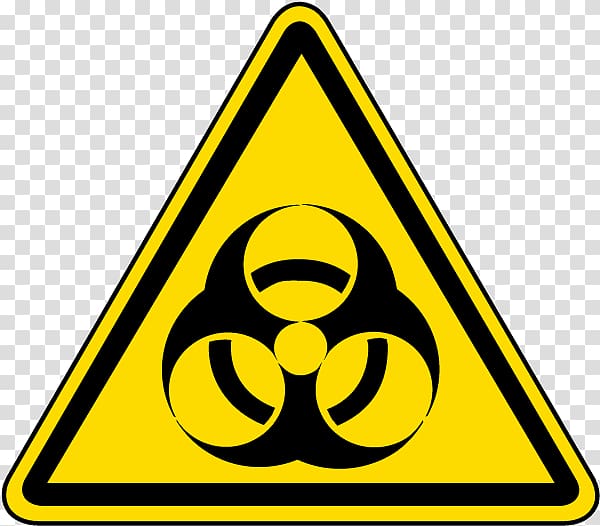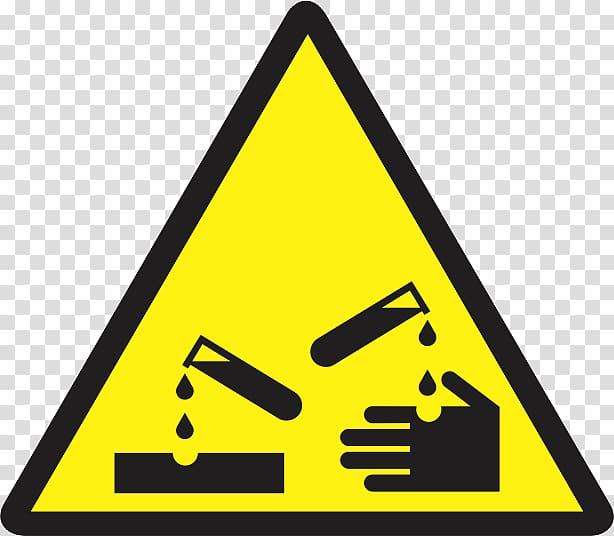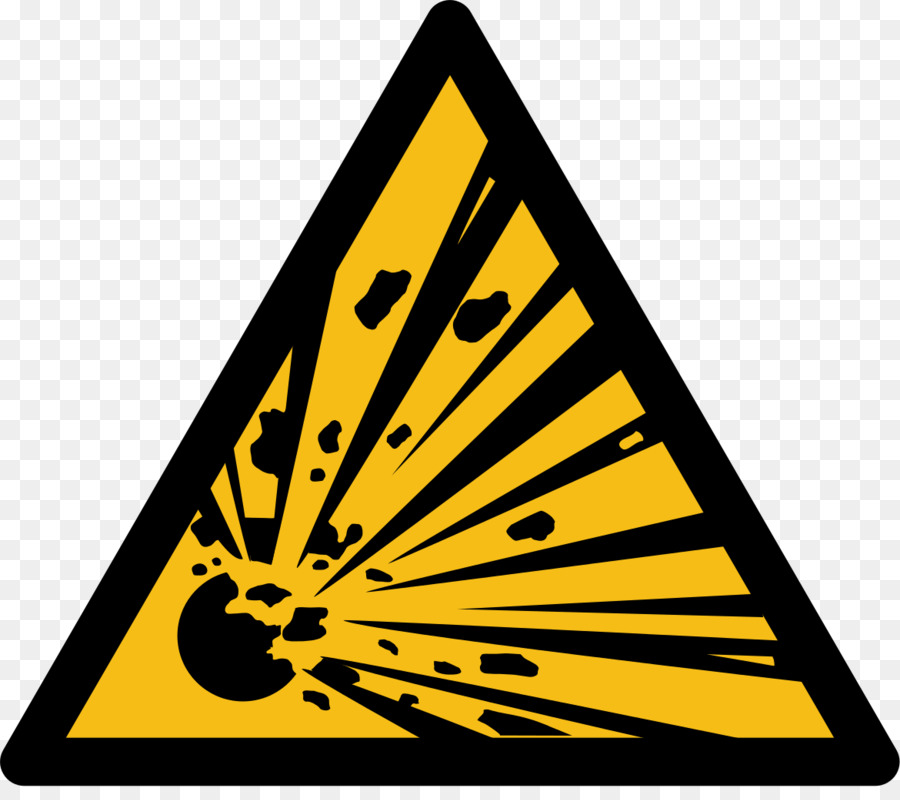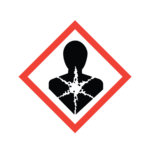
Table of Contents
Fire Safety Symbols
- Fire Extinguisher
- Flammable
- No Open Flames
- Oxidizing Material
Hazard Symbols
- Biohazard
- Corrosive Material Hazard
- Explosive Material
- General Warning
- Health Hazard
- High Voltage
- Laser Beam Hazard
- Low Temperature
- Toxic Material/Poison
- UV Light
Physical Safety Symbols
- Breathing Masks
- Eyewash Station
- First Aid Station
- Food and Drink Prohibited
- Gloves Required
- No Pacemakers or Metalic Implants
Radiation Hazard Symbols
- Ionizing Radiation
- Non-Ionizing Radiation
- Optical Radiation Hazard
Labs are chock full of hazardous materials like corrosive chemicals, biological samples and infectious agents, sharp tools and equipment, flammable materials, breakable glassware, and radioactive materials, just to name a few. The safety of all lab personnel, the facility, and the surrounding environment are of the utmost importance under any testing or research conditions, regardless of the type of hazards present in your lab.
To promote the safe handling of hazardous materials and equipment, all labs should display appropriate laboratory safety symbols as guidance to all staff and visitors.
Consistency is Key
Though every industry and each individual lab has its own unique way of doing things, one thing remains the same across the board: safety symbols. In 2003, the UN established a standardized set of lab safety symbols each depicted by a unique pictogram.
Referred to as The Globally Harmonized System of Classification and Labeling of Chemicals, this system has been adopted by scientific communities globally, and now serves as a common point of reference for lab technicians everywhere.
Adherence to the standardized symbols allows for better collaboration between teams and helps to bridge the gap between labs in different industries or countries. Rather than being forced to learn an entirely new system each time they enter a new laboratory environment, technicians can count on the same symbols being used no matter where they may be working; this helps to speed up training and to minimize mistakes, accidents, and injury.
Fire Safety Symbols
Fire safety symbols are used to warn lab personnel of the presence of flammable materials, fire hazards, and necessary environmental/protective measures for preventing fires within the lab. These symbols may refer to particular substances, may be used as general warnings, or may serve as reminders for proper safety procedures.
Fire Extinguisher

One of the many lab safety symbols indicating fire-fighting or fire-proof equipment, the fire extinguisher label is extremely important for the safety and wellbeing of all laboratory staff and the facility as a whole. Other examples of fire safety labeling include signs for fire blankets and fire hoses.
In case of fire, clear labeling of all fire extinguishers and other equipment is vital to ensure speedy and efficient handling of the emergency.
Flammable

The presence of the Flammable symbol indicates that flammable chemicals/materials are present within the lab, and extra precautions should be taken accordingly. Flammable materials should, for example, be stored away from sources of ignition like heat or open flame.
Flammable materials are typically classified as liquids or solids that may ignite with less than 5 minutes of heat or open flame exposure and may pose serious health and safety risks to personnel and the facility if not properly handled or stored. Materials often labeled as flammable include ethanol, acetone, and many common household cleaners.
No Open Flames

Though considered standard pieces of equipment in many laboratories, tools like Bunsen burners and lighters may also be hazardous under certain conditions. Labs utilizing highly flammable or combustible materials will often display “no open flame” warnings to prevent the use of such tools near possibly hazardous materials.
Though chances of fire or damage to the laboratory workbenches or facility rise in any scenario where an open flame is used, the risk is further elevated by the presence of flammable chemicals and materials. To avoid catastrophe or injury, open flame devices should never be used in labs displaying this symbol.
Oxidizing Material

Oxidizing materials supply additional oxygen to other chemical substrates, thereby increasing the material’s flammability. Because of this, oxidizing materials should always be stored away from flammable materials and should always be handled with additional caution and care.
Oxidizing agents are also hazardous to human health, and proper personal protective equipment should always be used when handling these materials. Oxidizing agents can also cause technicians and their clothing to become flammable, so proper personal protective equipment (PPE) should be worn at all times.
Materials often labeled as oxidizing include peroxides, bromine, and chlorine.
Hazard Symbol
Hazard symbols are designed to show the presence of a material, substance, or pieces of equipment that may cause harm to human health.
Biohazard

The “biohazard” symbol denotes a space or full facility that handles or comes in contact with biological materials. Examples of biological materials include blood samples, infectious agents, bacteria, or other human-derived samples.
This symbol serves to remind staff of both the risk and necessary procedural precautions associated with the handling of biological materials. Labs displaying this symbol should enforce the use of proper PPE, regular cleanings, and proper isolation procedures to prevent leaks or environmental contamination.
These labs should also implement the use of risk mitigation tools like biosafety cabinets, designed to remove airborne infectious agents during the course of testing.

Corrosive Material Hazard
The corrosive material hazard symbol warns lab personnel of the presence of substances that can cause serious harm should they come in contact with skin. Since corrosive chemicals are able to eat away at and burn the skin, PPE should always be worn while handling these materials.
Materials labeled as corrosive include hydrochloric acid, sulfuric acid, and sodium hydroxide. If your lab uses these kinds of materials, chemical grade epoxy resin and phenolic resin are ideal worksurfaces to have due to their high chemical resistant properties.
Explosive Material

The “explosive material” warning is used for laboratories handling chemicals with explosive properties. These materials may explode due to environmental conditions, exposure to high-heat or flame, or when mixed with other substances.
While few labs handle explosive chemicals, many utilize aerosols and compressed gasses which may pose a similar threat. This symbol is typically used to mark specialty housing/storage for compressed gas and explosive materials, which is usually kept away from the central workspace of the lab.
General Warning

The “general warning” symbol is exactly what it sounds like, a general warning of the presence of hazards. While this symbol may not be specific to one type of hazard, it plays an important role in labs everywhere.
The general warning symbol is used to warn lab personnel of the persistent presence of potential risks and serves as a reminder to regularly double-check personnel protective equipment and other safety procedures. General warning symbols are often displayed throughout the lab, present in a variety of locations around the facility.
Health Hazard

The “health hazard” symbol is displayed in labs where materials associated with chronic illness or other human health risks are stored or used. These materials are often classified as carcinogens, mutagens, reproductive toxins, aspiration toxins, and so on.
The clear labeling of areas where these materials are used can help to promote personnel safety, reducing the risk of illness or death as a result of exposure to toxins and other irritants. The health hazard symbol helps to encourage not only the safe handling of these materials, but also the use of other safety precautions like PPE, fume hoods, and so on.
High Voltage

The symbol for “high voltage” serves as a warning to staff that they are in the presence of a piece of equipment that carries enough voltage to seriously injure or kill them. While high-voltage equipment like an electrophoresis chamber can be extremely useful for the testing of various products and materials, they can also be extremely dangerous when used incorrectly or carelessly.
To avoid electrocution, personnel should always wear PPE like rubber gloves when operating high-voltage equipment, and areas marked with high voltage symbols should be avoided when not in use. Most labs and production facilities dealing with high voltage requirements some combination of ESD workbenches and ESD chairs and floor mats.
Laser Beam Hazard

Skin, eyes, and flammable materials are all at risk in the presence of laser beams, requiring staff and other lab personnel to wear protective clothing at all times when operating or in the presence of lasers. The “laser beam hazard” symbol helps to remind personnel of the potential risks and helps to reduce the chances of fire by keeping safety at the forefront of everyone’s mind.
As an extra precaution, flame-retardant or fire-resistant clothing is preferred in these environments.
Low Temperature

Certain chemicals and materials must be stored at temperatures far below that of a conventional freezer. Though safe and optimal for substances like liquid nitrogen, these extremely low temperatures can be harmful to humans with prolonged exposure.
To help remind personnel to use proper PPE when retrieving, handling, or returning low-temperature materials, “low temperature” safety symbols should be displayed wherever this type of storage is being used.
Toxic Material/Poison

Like the “general warning” symbol and the “health hazard” symbol, the “toxic material/poison” symbol acts as a blanket warning of the presence of materials that can cause serious harm to human health if ingested, inhaled, or otherwise come in contact with. The effects of toxic materials vary and depend greatly on the manner, length, and degree of exposure. In areas marked with the toxic material symbol, personnel should wear extensive PPE including gloves, face masks, goggles, etc.
Examples of toxic materials include ammonia, bleach, and battery acid.
UV Light

The “UV light” hazard symbol is used to mark all areas of the lab in which UV light is being used in order to help lab staff to avoid prolonged exposure to the harmful rays. Ultraviolet light is frequently used in the testing, research, and assessment of various acids, bacteria, and DNA visualization.
Despite being invisible to the naked eye, prolonged or regular exposure to UV rays may cause burns, skin ulcerations, and even certain skin cancers in humans. The UV light hazard symbol helps to remind lab personnel of the dangers of UV, and of the necessity to wear proper PPE and follow all other safety precautions.
Physical Safety Symbols
While “hazard symbols” inform staff of materials and equipment within the lab that may be hazardous, “physical safety symbols” provide information to lab staff on what they can do to reduce their personal risks and keep the facility safe as a whole.
Breathing Masks

The presence of a “breathing mask” symbol indicates to lab personnel that that area’s oxygen supply has been contaminated. To avoid the inhalation of airborne diseases, toxins, and pollutants, personnel should utilize full-face or half-face respirators, depending on the specific nature of the contaminants.
Breathing masks help to supply the wearer with clean air by either filtering out toxins or supplying a fresh supply of oxygen from a clean and safe source.
Eyewash Station

Accidents happen, but that doesn’t mean you shouldn’t be fully prepared for the occasion. Eyewash stations should always be clearly marked, and all lab personnel should be familiar with their general locations. These can either be standalone pieces of equipment or built into a custom workbench. Eyewash stations are an integral piece of safety equipment for any lab, and should always be kept in good working condition in case of accidental spills or splashes. Eyewash stations should be used immediately in the event of a corrosive or otherwise harmful substance coming in contact with anyone’s eyes.
First Aid Station

Like for eyewash stations, all first aid kits should be clearly marked by a “first aid station” symbol. First aid kits should be strategically placed throughout the facility in case of an emergency or injury and should be checked monthly to ensure no pieces or vital components are missing.
First aid kits should be made to include all OSHA-mandated first aid supplies and should be plentiful enough to account for the safety of all lab staff and personnel.
Food and Drink Prohibited

Due to the high concentration of toxins and potentially harmful materials stored and used in laboratory settings, many facilities choose to display “food and drink prohibited” signage. These signs are hung with the intention of preventing the accidental ingestion of harmful chemicals and should be closely adhered to prevent illness or injury.
The prohibition of food and drink within the laboratory can also help to prevent accidental contamination of test samples.
Gloves Required

As with the “breathing masks” symbol, the “gloves required” symbol indicates the presence of potentially harmful substances. When this symbol is present, personnel should diligently utilize gloves and other PPE to avoid chemical burns, corrosion, allergic reactions, and so on. In labs where this symbol is displayed, gloves should also be readily available and easy to access.
No Pacemakers or Metalic Implants

Labs that utilize equipment containing strong magnetic fields should display prohibiting pacemakers and metallic implants. Individuals wearing these and other metallic implant devices should avoid work with instruments producing strong magnetic fields, as they may cause malfunction of the device or other severe bodily harm.
Though individuals without pacemakers can safely work in these environments, they should also take care to remove all metal and jewelry before entering the lab in order to avoid physical injury.
Radiation Hazard Symbols
Despite being an effective treatment against a variety of diseases, radiation can also be extremely harmful. A variety of radiation apparatus is utilized in labs around the world, sparking the need for a number of radiation hazard symbols to be added to the long list of general lab safety and warning symbols.
Ionizing Radiation

Ionizing radiation is one of the most common forms of radiation and has the power to completely remove electrons from atoms or molecules. Though harmful in high-doses, ionizing radiation does not pose an immediate threat in low doses.
Burns and radiation poisoning are not uncommon in individuals who have experienced prolonged ionizing radiation exposure, and certain individuals may be more susceptible to skin cancers even after only brief exposure. Examples of sources of ionizing radiation include x-ray apparatus and particle accelerators.
Non-Ionizing Radiation

Non-ionizing radiation sources include fluorescent lamps, certain lasers, and microwaves, and does not have the power to detach electrons. This relatively benign form of radiation is one we are exposed to in low-levels almost daily, and should not be considered a significant risk at low-to-medium levels of exposure.
Since non-ionizing radiation can produce heat, prolonged exposure could put personnel at risk of burns, eye damage, and certain skin cancers. PPE, biosafety cabinets, and other protective equipment can help to mitigate the risk and reduce overall exposure.
Optical Radiation Hazard

The best example of an optical radiation hazard is the sun, which, if looked at for too long, can cause serious burns and damage to the eye. Like the sun, certain high-powered lasers and other equipment can cause irreparable damage, potentially resulting in the loss of sight, optical burns, and other serious and painful conditions.
To mitigate the risk of injury, protective eyewear, specialty laser housing, and other safety measures should be taken in labs displaying “optical radiation hazard” symbols.
Need Help Planning Your Lab?
Give us a call at (866) 222 -7494 to get started


